
Planning a Succulent Garden
Part of my objective when designing a new succulent garden bed is to ‘direct the eye’ to different sections of my garden. I do this
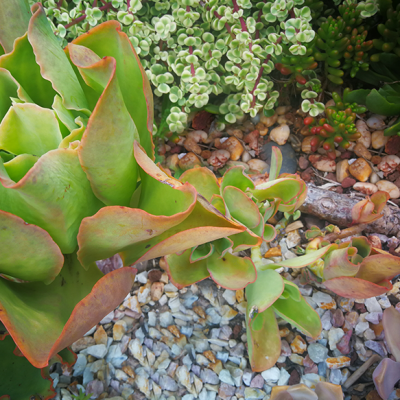
Succulent Blog » Beheading Echeveria
Why do you need to behead? How to behead – When to behead: A guide for Australian Echeveria enthusiasts

Once a very healthy and happy Echeveria Pallida (pictured left), this lady has grown old and a little tired. How can I tell she is old and tired? For starters, she is one of my oldest Echeverias, in the same position for around 3 years. Over time her stem has grown longer and longer and she has eventually fallen over and started to grow roots all the way up her stem (see image below). Succulents find so many ways to ensure their survival from aerial roots to leaves self propagating.
After a few weeks of her starting to look a little shrivelled and sad I decided it was time to behead her. As the days are cooling down but we are still in summer (Echeveria growing season) it is a good time to take drastic measures and give her the big chop! This will allow her to get back to her original beautiful self without that long and sad looking stem that had actually started to rot from the bottom.
My Echeveria Pallida pups where already making plans to jump ship and move on to greener pastures, developing their aerial roots which would eventually root in the ground and operate independently from the main stem… I could have left them alone however I don’t really like the unsightly look of the main stem.
So, how do you behead an Echeveria?
You have several options, many growers use the dental floss method (which is great if your mother plant is still young and doesn’t have a very solid stem) while others use a sterile knife or cutters. I tend to use a sterile knife, it is very important to use very clean cutting instruments to ensure no bacteria can get into the open wound… If we cut ourselves out in the garden, we certainly would go and wash our hands to ensure we don’t get an infection yes? The same applies to succulent cuttings.
Make your cut just under the main head, leaving at least a few cm’s for planting. If there is rot visable it is important to cut as far as you need to up the stem until the rot is no longer visable. If you find you are almost cutting the entire plant away then… it might be time to discard the main stem and just try leaf propagation… your baby is no longer for this world 😉
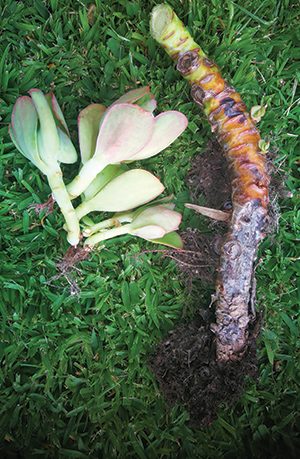
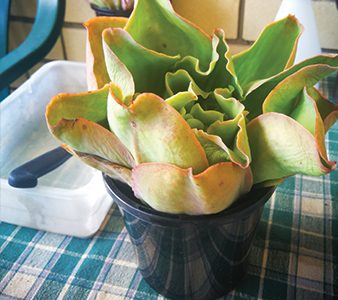
Once you have made your ‘cut’ it is time to place your echeveria into a plastic pot without any soil… Yes you heard right, by placing the head into an empty plastic pot (one that will hold the leaves in place as pictured) your Echeveria will retain it’s shape and for some reason the upright position will encourage roots to form earlier than if you were to just lie it onto a table. I learnt this method at a succulent workshop in Canungra (Serenity Succulents) many years ago and have found it very effective. Only plant the head once you see roots starting to form (this can take up to 4 weeks). This method ensures stronger roots, and less chance of rot once planted as we can be certain that the wound has most definitely callused over long enough.
Happy Echeveria Beheading!

Part of my objective when designing a new succulent garden bed is to ‘direct the eye’ to different sections of my garden. I do this
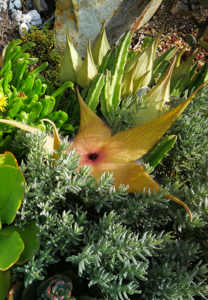
Autumn is a wonderful season for succulent blooms. This is a year for mostly propagating and maybe the occasional online purchase due to 2020 circumstances.

Did you know that succulents make a great firebreak? Not only are succulents waterwise plants but they can also create a great firebreak for your

When to repot, what soil medium to use and when to propagate is very important for any Rhipsalis grower. Rhipsalis are sometimes referred to as

There is much debate around top dressing succulent pot arrangements and garden beds. I have seen it all, mulching with sugar cane, mulching with bark

Recently I learned a member of a succulent Facebook group I am heavily involved in, Adrian Antonio Peake, was going to be featured on Gardening
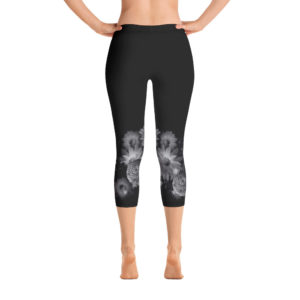


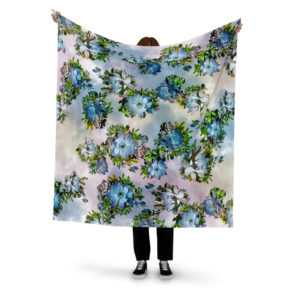
© All rights reserved